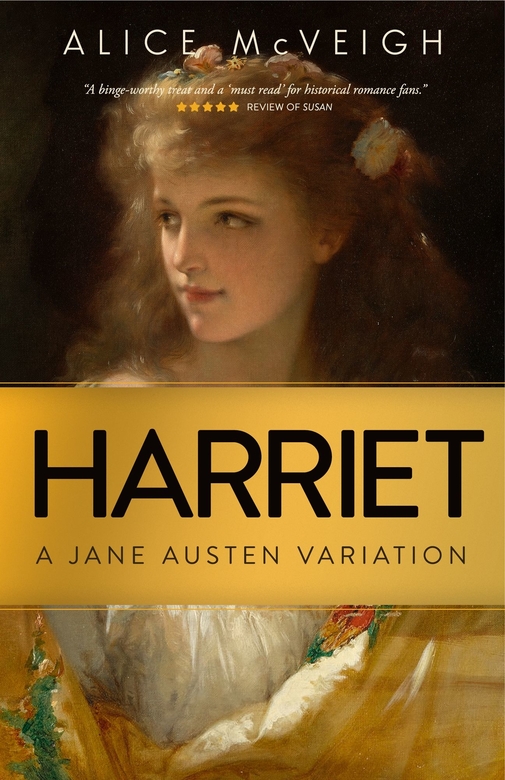
Harriet Smith boldly catapults herself into the delicate world of high society in Harriet: A Jane Austen Variation, another masterfully penned homage by Alice McVeigh. Youthful passions, fanciful romance, and shifting social dynamics make this an entertaining drama, a peek into the past, and a subtly modern treat.
Casting herself in the role of Emma Woodhouse’s protege, or live-in pet project, in an effort to move herself into a new sphere of society, Harriet cuts a strong, fearless, and authentic figure. Austen fans will be familiar with Emma’s character, from the novel of the same name, but this variation focuses on Harriet as Emma’s peer, who experiences the world in a wildly different way.
Harriet’s inner monologue is a charming and revelatory glimpse of her ambitious, yet compassionate psyche; such strong and memorable narration is a staple of Austen’s writing, and within the first few chapters, Harriet’s character comes to life in this dynamic story. From serving wealthy families to being courted by their favored sons, Harriet’s social maneuvering is impressive, making it easy to root for her success. As this book unfolds, class divisions fall away, and unusual friendships form before readers’ eyes – along with unexpected alliances, quiet grudges, and high-class fantasies.
The dual narration of Harriet and Jane Fairfax adds depth and breadth to this imagined world, and when their lives eventually cross about one-third of the way through the novel, the drama truly takes off. Harriet is fielding proposals and advances from numerous gentlemen, while Emma plays matchmaker and laments her fortunate lot in life, but Jane’s “enticing mystery” pulls some of the attention away from Emma’s expected glow: “One admired Miss Woodhouse, but lingered on Miss Fairfax, as the rarer flower.”
Though it can occasionally be hard to keep track of all the characters as they’re introduced in faster-moving scenes, everyone eventually has a purpose, and some defining bit of charisma or plot importance that cements them in place. The vivid descriptions and immersive scene-building make the reading experience a pleasure, while the sardonic asides and whimsical moments of dialogue give the book an occasionally playful air. Drawing room gossip, swirling rumors, and complex romantic geometry make this a saucy read, but there are also profound commentaries on gender roles, classism, friendship, trauma, and heartbreak laced within the prose.
The challenge of writing in the style of Jane Austen is, of course, the linguistic acrobatics that such an emulation requires. While there is a good deal of eloquent prose in these pages, there are also some moments where a turn of phrase doesn’t quite land, or a sentence runs on too long. In the next breath, however, McVeigh will gracefully unspool a scene so clever and perceptive that a reader could forget they aren’t reading the words of Jane Austen herself. Polishing the occasional clumsier moments in the writing would raise this book to an elite level, though it is certainly a worthy homage.
As a whole, McVeigh delivers a remarkably engaging tale of love, loss, and learning from one’s mistakes, skillfully capturing the essence of Austen’s world, but adding fresh dimensions for a new generation of readers of historical romance.
Book Links
STAR RATING
Design
Content
Editing
Get an Editorial Review | Get Amazon Sales & Reviews | Get Edited | Get Beta Readers | Enter the SPR Book Awards | Other Marketing Services























Leave A Comment